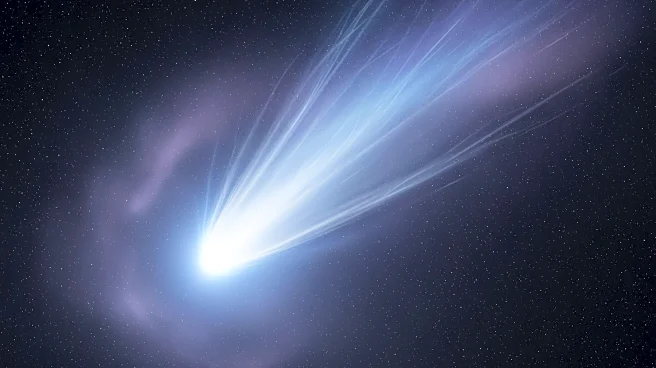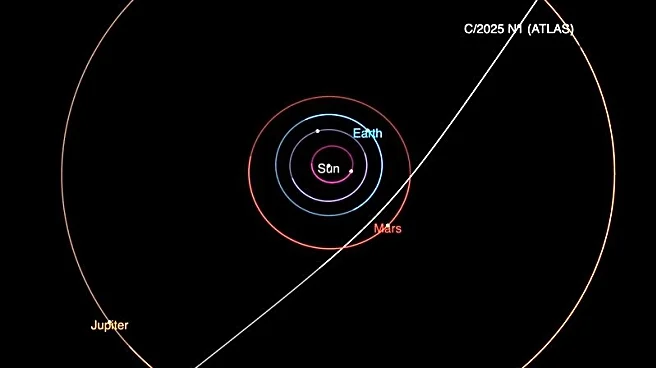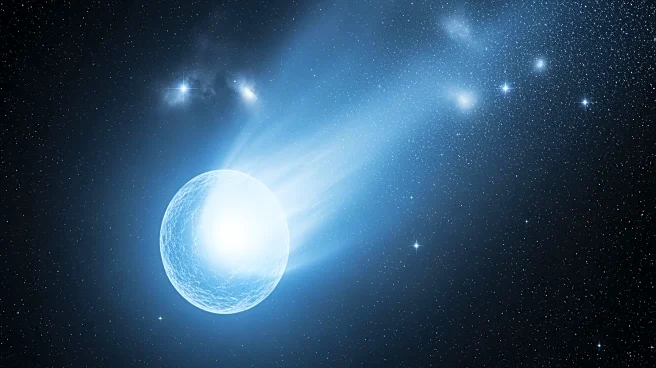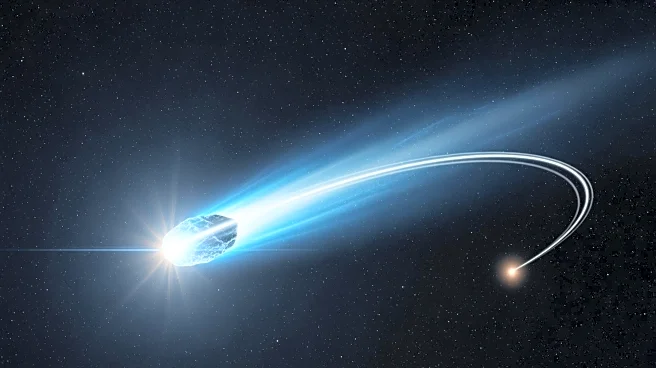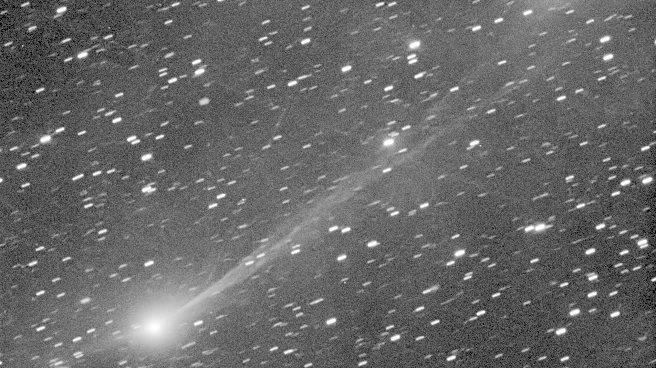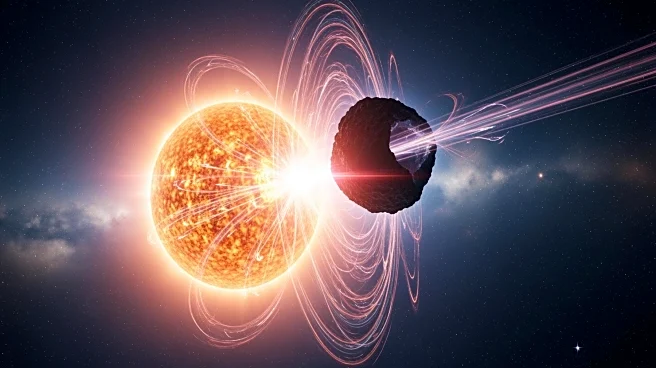What's Happening?
NASA's STEREO mission has successfully observed the interstellar comet 3I/ATLAS, marking a significant achievement in space exploration. The comet, traveling at 130,000 miles per hour, was initially expected
to be too faint for detection. However, through advanced image processing techniques, the STEREO mission was able to capture detailed images of the comet. This observation is part of a broader effort by NASA to study interstellar objects, providing insights into their size, physical properties, and chemical makeup. The comet was discovered by the ATLAS survey telescope in Chile and is the third known interstellar object to pass through our solar system.
Why It's Important?
The observation of comet 3I/ATLAS is crucial for understanding the characteristics of interstellar objects, which differ from those originating within our solar system. This research can provide valuable information about the composition and behavior of celestial bodies from other solar systems, enhancing our knowledge of the universe. The data collected by NASA's missions can help refine models of comet trajectories and improve predictions about their interactions with solar system bodies. This contributes to the broader field of astrophysics and aids in the development of strategies for future space exploration.
What's Next?
NASA will continue to monitor comet 3I/ATLAS as it travels through the solar system, collecting data to further analyze its properties. The comet is expected to pass closest to Earth in December, providing additional opportunities for observation. NASA's spacecraft will continue to gather information, which will be used to refine models and improve our understanding of interstellar objects. This ongoing research may lead to new discoveries about the nature of comets and their role in the solar system.
Beyond the Headlines
The study of interstellar comets like 3I/ATLAS offers a unique opportunity to explore the diversity of celestial bodies in the universe. By comparing these objects to those within our solar system, scientists can gain insights into the formation and evolution of different planetary systems. This research may also have implications for understanding the potential for life beyond Earth, as it sheds light on the chemical compositions and environmental conditions of distant solar systems.
